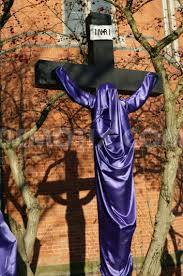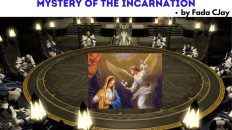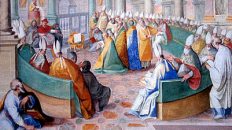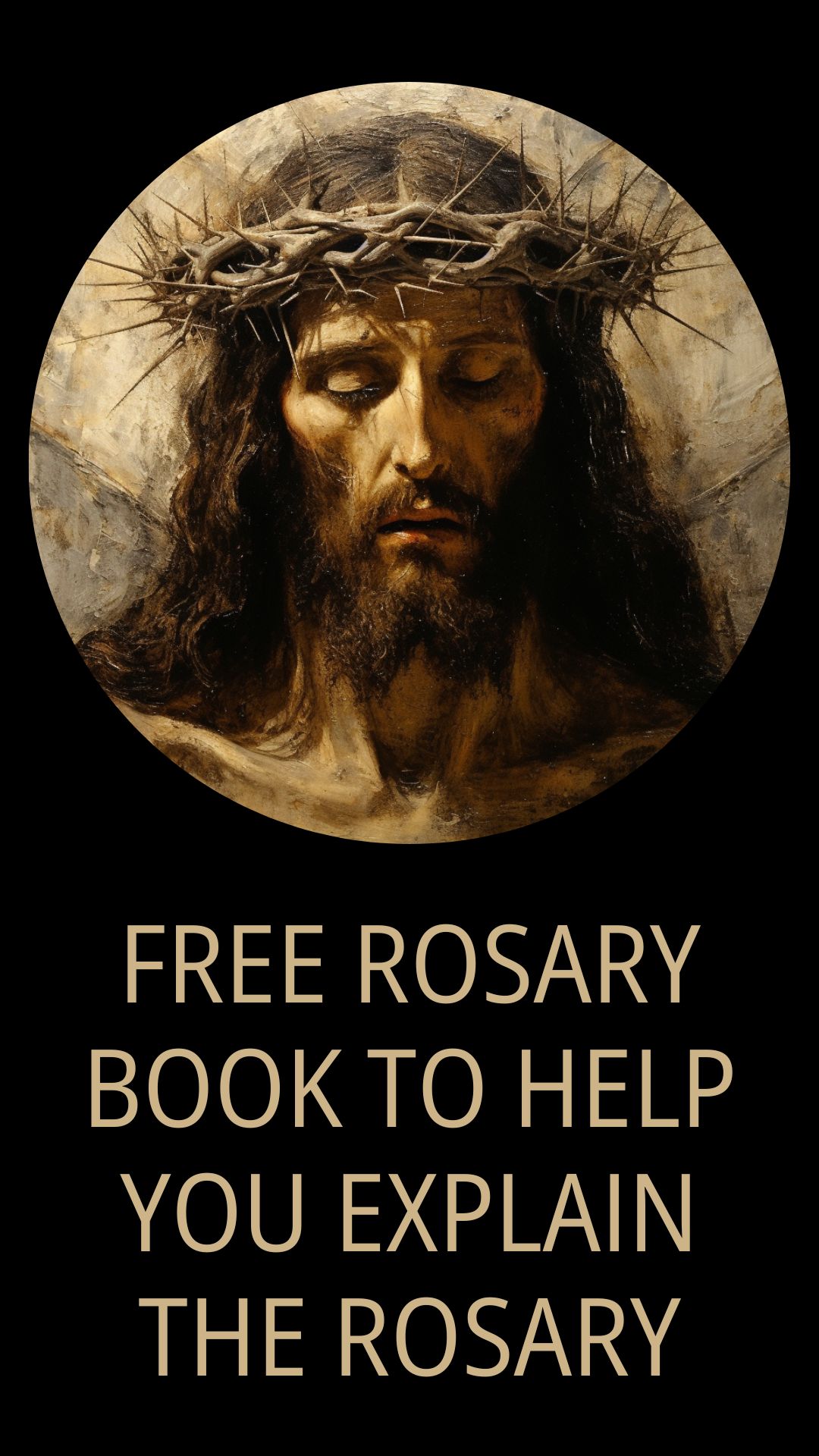THE PRACTICE
2. MYSTICAL SIGNIFICANCE
3. SPIRITUAL SIGNIFICANCE
4. HISTORICAL SIGNIFICANCE
PRACTICE:
It has been the custom of the Roman Catholic Church, at least in modern times
(from the 17th Century forward), to veil the crosses and the images of the
saints from the 5th Sunday of Lent until Easter. This has been, and ought to
continue to be, one of the defining characteristics of the season of
Passiontide.
This varies within the church, but still in many churches throughout the West,
crosses and statues are veiled now and will remain veiled for two full weeks.
The Catholic Encyclopedia describes this custom as follows: “Before Vespers of
Saturday preceding Passion Sunday [i.e. the 5th Sunday of Lent] the crosses,
statues, and pictures of our Lord and of the saints on the altar and throughout
the church. The crosses remain covered until after the solemn denudation of the
principal crucifix on Good Friday. The statues and pictures retain their
covering, no matter what feast may occur, until the Gloria in Excelsis of Holy
Saturday.” However, it is noted that the statue of St. Joseph may remain
uncovered, if outside the sanctuary, during the month of March, which is
dedicated to his honor.
Of course, this practice is no longer mandatory in the Novus Ordo, but it is
certainly permitted. However, if the custom is to return to popularity, it will
be necessary to come to some understanding of the meaning behind the veiling.
Why does the Church veil the cross in these final days of Lent, a time when she
is most intent on meditating upon the Lord’s dolorous passion?
The Mystical Interpretation
Abbot Gueranger enlightens us with a mystical interpretation of the Gospel
which, in former times, was read on this Sunday: As Christ hid himself from the
rage of the Jewish authorities (John 8:59), so now he is hidden from the world
in preparation for the mysteries of his passion.
“The presentiment of that awful hour [of our Savior’s passion] leads the
afflicted mother [the Church] to veil the image of her Jesus: the cross is
hidden from the eyes of the faithful. The statues of the saints, too, are
covered; for it is but just that, if the glory of the Master be eclipsed, the
servant should not appear.
“The interpreters of the liturgy tell us that this ceremony of veiling the
crucifix during Passiontide, expresses the humiliation to which our Savior
subjected Himself, of hiding Himself when the Jews threatened to stone Him, as
is related in the Gospel of Passion Sunday [John 8:46-59, They took up stones
therefore to cast at him. But Jesus hid himself, and went out of the temple
(John 8:59)]. The Church begins this solemn rite with the Vespers of the
Saturday before Passion Sunday.”
The Spiritual Interpretation
Dom Gueranger continues and directs us to acts of devotion for the Cross:
“Twice during the course of the year, that is, on the feasts of its Invention
and Exaltation, this sacred Wood will be offered to us that we may honour it as
the trophy of our Jesus’ victory; but now, it speaks to us but of His
sufferings, it brings with it no other idea but that of His humiliation.”
Considering that, in the season of our Lord’s passion, all the strength of our
devotion should be directed to the Cross of Christ, we may be surprised that
the images of the Cross are to be covered in these days. However, when we
recognize that we now venerate the Cross not so much as an emblem of victory
(as in the Triumph of the Cross) but as an instrument of humiliation and
suffering, we will soon understand the spiritual realities which are conveyed
through the covering of the crosses.
In his passion, our Savior’s divinity was almost totally eclipsed, so great was
his suffering. Likewise, even his humanity was obscured – so much so that he
could say through his prophet: I am a worm and no man (Psalm 21:7). His face
and whole body were so disfigured by the blows and scourges that our Jesus was
scarcely recognizable! Thus, the wounds he endured hid both is divinity and his
humanity. For this reason we veil the crosses in these final days of Lent –
hiding our Savior under the sad purple cloth.
The Historical Interpretation
We will reproduce here the historical study offered by Fr. Edward McNamara,
professor of liturgy at the Regina Apostolorum Pontifical University (taken
from Zenit):
“It probably derives from a custom, noted in Germany from the ninth century, of
extending a large cloth before the altar from the beginning of Lent. This
cloth, called the ‘Hungertuch’ (hunger cloth), hid the altar entirely from the
faithful during Lent and was not removed until during the reading of the
Passion on Holy Wednesday at the words ‘the veil of the temple was rent in
two.’
“Some authors say there was a practical reason for this practice insofar as the
often-illiterate faithful needed a way to know it was Lent. Others, however,
maintain that it was a remnant of the ancient practice of public penance in
which the penitents were ritually expelled from the church at the beginning of
Lent. After the ritual of public penance fell into disuse — but the entire
congregation symbolically entered the order of penitents by receiving ashes on
Ash Wednesday — it was no longer possible to expel them from the church.
Rather, the altar or ‘Holy of Holies’ was shielded from view until they were
reconciled to God at Easter.
“For analogous motives, later on in the Middle Ages, the images of crosses and
saints were also covered from the start of Lent. The rule of limiting this
veiling to Passiontide came later and does not appear until the publication of
the Bishops’ Ceremonial of the 17th century.”
possibility?
We would like to propose another possibility, one which need not conflict with
any of those given above. It may be possible that the Church covers the images
of the Cross during these days, for the same reason that she refrains from
offering the Sacrifice of the Mass on Good Friday. Namely, in this time in
which we mystically enter into the historical realities of Jesus’ final days,
it is not fitting to have the image, sign or sacrament of the Cross presented
to the faithful.
Indeed, St. Thomas tells us that “the figure ceases on the advent of the
reality. But this sacrament [i.e. the Eucharist] is a figure and a
representation of our Lord’s Passion, as stated above. And therefore on the day
on which our Lord’s Passion is recalled as it was really accomplished, this
sacrament is not consecrated.” (ST III, q.83, a.2, ad 2) In an analogous way,
it is fitting that, as the liturgical year recalls the events leading up to the
Crucifixion, the Church should hide the effigies of the Cross from the vision
of her faithful.
(Also read: Brief sinopsis of the Holy week)





